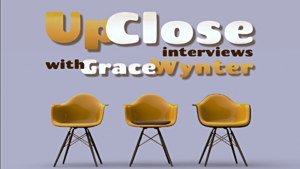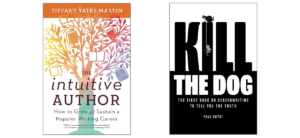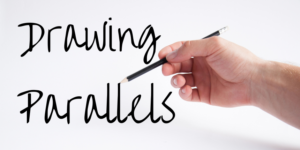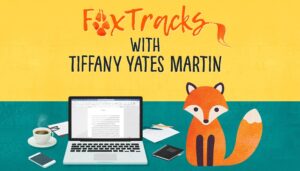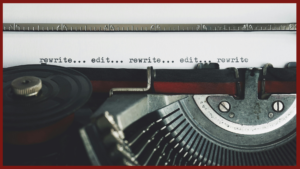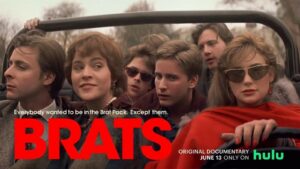perseverance
Greetings, WU Family. In my first post of the year, I’m introducing you to Ann Michelle Harris. Ann Michelle is an attorney by day, and at night, she writes romantic suspense and fantasy/speculative fiction with diverse characters and positive social justice themes. In today’s Q&A, she shares how her work in the areas of poverty, abuse, and child welfare guides her, how that work inspired her novel, North, and why she feels building community is one of the most important things a writer can do for their career.
GW: One of my favorite parts of this series is learning about an author’s origin story: the thing that propelled you from someone who only thought about writing to someone who actually wrote and has a book out. So, what’s your author origin story—in other words, why did you start writing and keep writing?
AMH: I have loved reading adventure stories since I was very young. I was an English major at Penn so I loved not just stories but also story analysis, themes, and structure. Several years ago, I went through a stressful time in my life and began immersing myself in escapist stories as a form of comfort. After months of consuming other people’s stories, I decided to become a contributor of short stories to a public writing forum. Positive responses convinced me that I might have a larger story worth telling and that I could be brave enough to take the risk to try to tell it. I specifically wanted to write an adventure story in honor of my children. Shortly after this, the pandemic came and gave me even more stress but also much more time to write since I no longer had to spend hours commuting to the office each day (and it gave me plot inspiration). That extra time allowed me to dig deeper into creating a full manuscript and begin the process of querying.
GW: Can you tell us about your path to getting North published?
AMH: After completing my manuscript, I began to query it to a few agents and independent publishing houses. I got rejections, but one rejection from a large indie press had detailed feedback about the plot (particularly the ending) and that helped me tweak some elements. I also worked with a developmental editor, a beta reader, and a critique group to fine-tune the scene structure and build more tension in the story arc. By then, I had heard from a few writers that it is sometimes more accessible to directly find a publisher than to find an agent. I had another historical gothic manuscript that was getting a lot of traction with agents, but I decided to pitch North to a small press at a writing conference, and they loved it after reading the full story. After I signed the publishing contract, I continued to fine-tune the manuscript and then worked with the publisher for editing, galleys, and cover design. I tweaked everything until it was ready for submission to the distributor, and then finally it went into pre-order. I used my pre-launch time to promote the book online, connect with readers, and lean heavily on the wisdom of my more experienced writer colleagues, who were incredibly supportive. Then the big day came […]
Read MoreAs a connoisseur of writing how-tos (and yes, I had to look up how to spell connoisseur – and okay, “addict” might be a more accurate word), I have read a TON of them. And while I find valuable nuggets in nearly all of these books, lately I’ve noticed that many recent writing how-tos are essentially sharing slightly different flavors of some very similar core information.
So when I encounter a book about writing that offers some new (to me, at least) ways of looking at the craft, I sit up and take notice. My gushing ode to Chuck Palahniuk’s Consider This in this 2020 post is an example.
I just finished reading another such departure from mainstream writing how-tos: The Intuitive Author, by WU’s own Tiffany Yates Martin, who, in addition to being a wonderful writer and editor, is also an insanely good teacher and public speaker. Seriously, if you ever have the opportunity to attend one of Tiffany’s sessions or events, take it. And if you’re an author who speaks at literary conferences, trust me: you do NOT want to follow Tiffany. She’s that good.
Having seen Tiffany’s amazing presentation on backstory at WU’s brilliant 2022 OnCon, I knew what an extraordinary editorial mind she has, and how good she is at getting under the hood to amp up and improve your writing at multiple levels. So with The Intuitive Author, I guess I was expecting a book full of deep analysis into the mechanics of writing, along with some sophisticated editorial techniques. Instead, much of the analysis she offers in the book leans more towards the psychology and strategy involved in pursuing – and ideally, enjoying – the life of a writer.
I quickly realized I was not reading The Average Writing How-To, and I dove into the book with my curiosity piqued. (And yes, I had to double-check whether it was “piqued” or “peaked.” Got it right the first time – yay! Hey, it’s the small victories. But I digress…)
In short, The Intuitive Author is filled with insights and perspectives quite unlike those offered in the vast majority of writing how-tos currently on the market. And reading Tiffany’s book made me think about another writing how-to I’d recently read that takes a pretty big departure from most conventional writing wisdom: the provocatively titled Kill the Dog: The First Book on Screenwriting to Tell You the Truth, by author and screenwriter Paul Guyot.
What does this Guyot dude have against dogs, anyway?
Nothing, actually. Instead, the animal Guyot truly hates – and is taking a not-at-all thinly veiled swipe at – is the cat. Specifically, the cat in the well-known “Save the Cat!” series created by the late Blake Snyder.
If you’re not familiar, Snyder’s initial Save the Cat! book (STC to the cool kids) burst onto the scene in 2005 with a VERY structured set of templates for storytelling, which he reverse-engineered from studying many successful movie scripts. Targeted at aspiring screenwriters, Snyder’s methodology offered a compelling framework for them to adopt […]
Read MoreMy mother has one of the so-called “superpower genes,” which boosted her capacity for resilience beginning in childhood. She likely needed it; her father fought against authoritarianism during WWII, earning a Purple Heart on Germany’s border.
I literally don’t have this gene. When confronted by threat, my impulse is to withdraw into a quiet, private space, away from others and even my art. It’s something I have to actively resist, which means I need to build resilience within myself, complementing my “nature” with some self-“nurture.”
But how?
Reach for an Anthem
It’s usually our friend Vaughn Roycroft who reaches for song lyrics, I know, but today I’m thinking of a song that’s long been a favorite of mine, “Love Don’t Go” by The Family Crest. There’s something about it that has always struck me as triumphant despite lyrics that can ride in the other direction. I’m writing with some new thoughts on that today as this earworm settles in with my permission and gratitude. (I’ve embedded the song at the bottom of this post, if you’d like to hear it first.)
So you lost your head inside your heart
And the weighty world it tore you apart
And you’ve all but given up
On the stone you call a heart, you’re singing out
If you’ve ever poured yourself into something you believed in, only to watch it falter, you’ll feel the truth in these lyrics about the weighty world’s effect on your spirit. When you care deeply about something and invest yourself in a cause that fails, it can feel like heartbreak. But in these moments of loss, there is also an invitation.
Sing it out
Creativity often finds its power when artists are driven to “sing it out”—to express pain, loss, or unfulfilled dreams through their craft. To use their struggles to add authenticity and depth to their work rather than retreat. Across generations, storytellers of all walks have transformed setbacks into fuel, finding purpose in the act of creating, despite life’s challenges.
Despite.
And because of.
My unquiet mind, even in the midst of [gestures to everything] nudged at me to use it. To see that the lens of my story, already large, could be larger yet. And what would that look like? An idea flooded in about the deeper roots in a dysfunctional system in my story, and I scrambled for a pen.
Oh, the love you’ve placed inside my hands
Oh, the fervor that your heart demands
Well we went off with a spark
But you were left out in the dark, singing out
Oh, sing it out
The gift of hard times for an artist is its nudge to recast what we thought we knew about the world and its people in order to bring a greater texture, power, and insight to our art. And the beauty of art, in part, lies in its ability to transform what’s heavy in our hearts into something even more authentic, which in turn can make it more relatable and even bridge divides.
Oh, love, you wanna step outside
Find a place to run and hide
It isn’t that it’s tough
It’s just that I don’t love you enough
Clouds will cast a shadow—it’s simply physics. Likewise, dark times can make us question the value of what […]
Read MorePhoto by Squirrelbrand
Dystopia can be enjoyable to write, but it’s painful to live in.
Let’s take a quick peek at cyberpunk. The Oxford Dictionary defines it as:
“a genre of science fiction set in a lawless subculture of an oppressive society dominated by computer technology.”
It has been around since the 60s, showcasing what sci-fi author Bruce Sterling terms “low-life and high tech.”
The world is oppressive, and those within it struggle to survive. There’s brazen violence, class disparity, and clawing despair hidden behind flashy, jaw-dropping technological achievement.
Rosy idealists don’t last long on these mean streets. Anti-heroes only need apply, if you keep your morals flexible even if your intentions are good.
Cyberpunk is hopeless by nature
There are no happy endings. Cyberpunk as a genre emphasizes that “the house always wins.”
If you’re in the system, you cannot beat the system. You can only:
When life imitates art
A quick glance at the news shows a world polarized, in varying states of conflict and chaos, with many places suffering war or environmental disaster. All against a technicolor backdrop of technical promise and A.I. everywhere, for everything.
It’s easy to become overwhelmed to the point of numbness and disassociation.
What’s worse, for some it’s become de rigueur for some to performatively embrace nihilism and extremism. (My Gen Z son taught me the term edgelord, meaning, also according to Oxford, “a person who affects a provocative or extreme persona, especially online.”)
So what’s the point of writing anything in the face of all this pain, hopelessness, and ultimate destruction? Other than playing your violin on the Titanic, or raging against the dying of the light… how will writing do anything in the face of a nightmare?
A counterpoint: solarpunk
Recently, I was fascinated to discover the existence of solarpunk.
While my beloved Oxford hasn’t quite caught up to this one, I resorted to Dictionary.com and got the following definition:
“an optimistic environmentalist subgenre of speculative fiction, art, and design that envisions future life on Earth transformed by the use of sustainable energy, close co-existence of human beings with nature, and progressive sociopolitical values.”
Interestingly, it has some similar trappings of cyberpunk, as far as fast progression of technology, but instead of responding with a projected outcome of decay and destruction, it shows what happens, or rather what could happen, if people are responding differently.
In these stories, there is still conflict and drama. But it’s a different kind of tension – and it shows a potential dream, rather than a prison sentence, thanks to deliberately refusing pessimism. You can read this in works by Ursula K. Leguin, among others.
The rise of cottagecore
I’ve witnessed an increase in offerings that promote what they’re calling “cottagecore” with an aesthetic of coziness, comfort, and natural beauty. Think hobbit holes, or a Hideo Miyazaki film. Technology used thoughtfully, with purpose and with good results… in balance.
For every edgelord, perhaps even outstripping them, there are those people searching for an alternative. They want joy, and beauty, and, to put it bluntly, rest.
In an unrelenting world, they […]
Read MoreI’ve always wanted to learn how to draw. Unlike writing (she says, modestly), this is an area where I’ve never had a speck of talent. Even my stick figures are ridiculous. So, this month, after years of putting it off—and having a class cancelled in early 2020, because spike proteins—I finally started a weekly, in-person drawing class.
I love having a new avenue for exercising the right side of my brain, though I have a very mechanical approach to drawing, so both sides are probably working hard. I tend to think in both images and words, but when I’m drawing I get a break from the constant commentary in my head. It’s very soothing. The popularity of adult coloring books is starting to make sense.
While learning to draw, I’m also seeing the parallels to when I first started writing a novel. Here are a few of the things that seem to come up when learning any new skill, especially a creative one.
Tools: Having the right tools makes a massive difference. What you can accomplish with a ball point pen is very different from what you can do with a set of graphite pencils in varying degrees of softness/blackness. In writing—depending on how your brain is wired—you might get vastly different results from using dictation, pen and paper, a standard word processor, or writing software like Scrivener.
Techniques: I’m amazed how much better my results are when I hold the pencil “correctly” for what I’m trying to accomplish. There’s one way for drawing and one for shading. And then, there are blending stumps for softening the result. Blending and shading with colored pencils has its own methods. To me this feels similar to learning things like story structure, plotting/pantsing methods, hooks, setting the scene, power words, and dialogue attribution. There might not be one best way to do these things, but some are definitely more effective for the way your brain is wired, your genre, etc…
Developing an eye: Understanding how light and shadow work, the key elements of a form, and how to show perspective are things that take time to see. We can get ideas and “hacks” from our instructors, but we also need to put in the work outside class, studying how different types of light impact an object. In writing, we can do the same thing by reading deeply within our genre or category to determine the reader expectations, commonalities, and constraints.
Finding your own style: Once we understand the basics and the “rules,” we can learn how to play with them, to develop our own style. Right now I’m learning Realism, but even within that I have choices. How I shade and shadow, the colors I choose, and how I represent the subject of my work. As writers, we each have an our own world view and a unique voice. Even when working within genre expectations, we can—and arguably should—put our distinctive stamp on it.
Patience and persistence: I’d argue that these are the most important, both in drawing and writing. One of the reasons I’ve never drawn anything well before is that I never put in the time. And for me, it takes a lot of time. Each of the drawings showcased here took me over an hour! Yes, […]
Read MoreTherese here. Before we get to today’s regular post, we want to let you know Tiffany Yates Martin’s latest book, The Intuitive Author: How to Grow & Sustain a Happier Writing Career, releases today! Not only that, today’s post features content that’s in line with her book but didn’t make it into the final cut. In Tiffany’s own words:
I love this story, but it echoed a similar one I told about two local restaurateurs who put their whole heart into their pizza-and-pastrami restaurant (odd combination, I know, but man, it works). I wanted to cover a lot of ground in all the areas that are so essential to develop skills and I couldn’t afford anything redundant. But the William Shatner chapter made it in. :) There was no way I was cutting the Shat.
Enjoy, WU community. And congratulations, Tiffany!
Design by Camille LeMoine
Not long ago, the hubs and I and some friends went to see one of my favorite musicians at a space at the Austin City Limits Moody Theater, tickets I’d eagerly stood by to snatch up, finger poised over the “buy” button, the day they went on sale.
The venue was completely sold out. The woman next to us had driven up from Houston because his concerts had sold out there too before she could secure tickets. The fellow fans around me and I excitedly compared venues where we’d seen him, and talked about our favorite past shows and our hope of attending one of his annual fan retreats, while we danced for two hours straight with one another and along with the crowd, most of us singing along to every song.
This is the kind of response any artist might dream about, isn’t it?
But you may never have heard of Eric Hutchinson, the musician in question. The listening room at the Moody where I saw him was, like all the venues where I’ve seen him play, relatively small, maybe 150 people or so. He’s had only three songs even hit the Billboard charts, and his peak position never made it past 29.
I discovered him incidentally about 15 years ago, when I heard one of his singles on the radio, “Rock and Roll,” and as some songs sometimes do, it snagged my attention so hard I immediately went out and bought his entire debut CD (yes, CD), Sounds Like This.
Since then I’ve seen him live every time he’s come through Austin, and bought all his albums. On this tour he took the stage by himself, with three instruments he alternated playing, and that was it. Just a man and his music and a relatively modest number of die-hard fans, who call themselves Hutch-heads.
How a Creative Career Is Built
That night Eric told the story of that first album that had originally turned me into a fan, the 15th anniversary of which was the focus of this tour. He had been trying to make it as a musician, living at home with his parents in between touring, and was just about ready to give up on music as a career when he decided he didn’t […]
Read MoreMy dad, Grant Overstake, has written millions of sentences. As a former journalist, pastor, and now novelist, he’s got what the writing world considers “chops.” Big papers like the Miami Herald published his sports column for years, and small papers had his by-line on every article from op-eds to sports to obits.
His young adult sports novels are precise, beautiful, engaging. His sermons, spoken word he wrote to help rural Kansans navigate their faith journeys and complicated lives in the late 90s, were captivating, heart-felt, well-rounded. This man has done it all in the writing world — if I listed his awards, I’d reach my word-limit in this article.
I decided early in my life that I, too, would be a writer. If you’re a parent and you try to get your kid to find passion in the things you love, you likely will feel one of two things: the sting of rejection accompanying an eye-roll, or the wave of pride accompanying an attempt. My first attempt was verbal storytelling, just like my dad behind the pulpit. It turned into written storytelling as soon as I could hold a pen. Sign me up, Dad! I wanted to be like him.
Sometimes, a sign-me-up attitude can be intimidating as a parent. What if your child is no good? What if they’re not coachable? What if criticism of them is too much? I don’t know what form of bravery swept me as a child, but I showed my award-winning journalist father my first attempt at a novel, written in a wide-ruled spiral-bound notebook.
“Don’t overwrite,” he said. “Simplify it. Here, read this.” And he handed me Hemingway, Herman Hesse, and Rick Reilly.
In high school, he read my articles for the school paper and with his bracing, left-handed scrawl, edited with no hesitation. I remember, at first, that it stung. I might’ve cried. I was fifteen, learning from a master. I worked harder, read more closely, listened carefully. I built my words on the true stories from a small-town high school where football reigned supreme. In this world, the girls on the sidelines weren’t writing articles; they were dressed in cheer uniforms, caught up in the spectacle rather than the storytelling.
I donned a cheer uniform, too, and learned and listened to how sports were played. I wrote for myself, for my classes, for my newspaper, for essay contests. I sought my dad’s praise, his admiration, his subtle nod that affirmed I’d done it right. I won some of my own awards.
I had to learn, from an amazing writer, how to accept what a first draft is: each sentence might change. Bones are there, meat needs to fill in around it. Simpler is better. Red ink is strengthening your work. None of this is personal – these words are not tattooed on you. Nothing is permanent until the paper’s put to bed, kid. I remember the smell of newsprint, the dusting of ink on the sides of his hands, his press badge on the kitchen counter, his fingers calloused with the grip of a pencil.
I learned how to accept his red ink […]
Read MoreI love the Olympics. Summer and Winter. The athletes from all over the world, The sports most of us only see every four years. The glorious variety of the human body and what it can do. Let me see it all!
The television coverage is mostly about winners and the medal count: who won, who was supposed to win but didn’t, how much they won by, or how little, how much or how little they lost by, who and which country has the most medals, most golds.
But the more race- and event-side interviews I heard, the more I saw that the athletes focused on other things: their game plan, their training, their mental and physical fitness, their support system. For some, executing their game plan would result in a medal. For the majority of competitors, it would not.
Yet they were all Olympians.
And Olympians seem to measure success differently from the shiny-reward-obsessed media and public.
Chris Chavez asked Connor Mantz, a U.S. marathoner who came in 8th at the Olympics how he evaluated success for the race. Mantz said,
“The build for it was really, really good. I think my fitness was great. I think I was in a great spot, physically. The more I review it, I probably underperformed for how fit I was, but it’s hard to evaluate…. I was going in with the mentality that I could medal even before we left. I just knew my fitness was at a different level. Yes, eighth is great and I’m happy about that, but I don’t think my fitness really showed in this marathon. I think I have another level that I’m trying to bridge the gap to.”
If you listen to the entire hour-long interview, you can see how granular Mantz gets, all the different ways he considers his performance, which was a 2-hour result of years of work and training. He’s happy with the result, even as he sees room for growth and improvement.
American sprinter Noah Lyles talked with great confidence (some called him cocky) at the beginning of the Games. Commentators gushed at the possibility that he could win gold in the men’s 100m and 200m. He won gold in the 100. But in the 200, a race he expected and was expected to win, he got bronze and had to leave the track on a wheelchair because he was physically struggling to breath and walk after running that race with COVID. Shortly after, he gave a trackside interview to Lewis Johnson:
“It’s taken its toll for sure, but I’ve never been more proud of myself for being able to […]
Read MoreMe, walking into a cocktail party at a writer’s conference: I am confident in my writing ability. I have worked hard to improve my craft. I have insights and wisdom worthy of sharing. I deserve my seat at the publishing table.
Also me, walking into the same room: When is everyone going to figure out I’m a hack? I don’t deserve to be in this room.
Which one are you? Do you walk into a room full of writers and feel like you deserve to take up space in the publishing world? Or do fear being unmasked as an imposter?
Or maybe, like me, you do both.
Ever since I walked into my first writing workshop, I’ve been dangling from a pendulum that swings wildly between postures of confidence and crippling imposter syndrome. I believe it’s healthy to temper confidence with a bit of self-doubt, and I believe toxic self-doubt can be righted by remembering your true, honest accomplishments, even if they are small. I have trouble navigating the space between the two.
I’m still trying to figure out how to balance the confident fake-it-til-you-make-it mindset and imposter syndrome, but I’ve learned a few strategies that help me navigate the highs and lows.
Last month I turned in my third novel, The Forest Becomes Her, slated for publication in early 2026 from St. Martin’s Press. I’m already hard at work on my fourth novel, which is also under contract. Six years ago, I would have been giddy to know I would publish a novel. If someone had told me there would be four (and hopefully more) I would have passed out from joy.
But I also would have been skeptical. Why would anyone publish my novels? I’m a hack, I would have thought.
When I started working on my first novel manuscript, I embraced the fake-it-til-you-make-it approach to the publishing world. I believed in my book, but I didn’t have any relevant experience to include in a query letter. I looked at my unimpressive resume, and, instead of giving up, I decided to fill out my CV, one line at a time.
As I continued working on my novel manuscript, I entered contests. Flash fiction, short stories, novel excerpts. So many contests. Most of them led to disappointment, but I won several. I entered the wins into my scant author bio. Award-winning writer.
I submitted widely to literary journals, and, along with a pile of rejections, I received a few scattered acceptances, although, admittedly, they were all from smaller journals. I added these publishing credits to my bio. Published fiction writer.
I contributed essays to numerous websites that accept guest posts and wrote book reviews for a few websites. I was a blogger and book reviewer.
I volunteered to lead some small writing workshops. I was a workshop leader.
None of these minor successes involved platforms like Pulitzer or Ploughshares or The New York Times, but they were legitimate, hard-fought wins, and I was proud of them. I was making small inroads.
After a few years, the bio paragraph in my query letter began to feel respectable. I, however, wasn’t impressed. None of the lines in my bio were false. They weren’t exaggerations. I had won several writing contests, published a handful of essays, reviewed books, published short stories, and taught writing classes. […]
Read MoreCredit: ABC Studios
My fellow writers, we need to talk about the new documentary by Andrew McCarthy, BRATS. It’s not just a nostalgia trip. It’s about criticism and rejection and survival as artists.
The film is instructive because it’s not about how criticism landed on one person and their career. It’s a research study about how criticism affected a group of people, each reacting in their own way. This is what gives us options.
(It’s also about a writer with his own bruised ego. We’ll get to him later.)
Here’s the back story — a group of young actors were enjoying huge success when, as NPR puts it, “journalist David Blum wrote a story in 1985 for New York magazine titled ‘Hollywood’s Brat Pack,’ centered on time spent partying with Estevez, Lowe and Nelson, that cast shade on the group — lumping them together as unprofessional and over-privileged, while sticking them with a moniker which would follow them all around for decades.”
We follow McCarthy as he tracks down as many members of the so-called Brat Pack as possible to find out, thirty years later, how the nickname affected them, professionally and personally.
What might be astonishing for non-artists is how heavily being lumped into that group weighed on McCarthy, disastrous to his career and to him, personally. But this is not an unusual story for creatives. I see storylines like this—albeit not usually at this level of fame—and openness.
Let’s take a beat to be grateful for McCarthy here. One issue facing creatives is that so few people are willing to talk about failure, real or perceived, so our narratives are skewed and our models for how to deal with rejection and failure go missing.
As we move through the film, we watch McCarthy realize that his reaction was specific to him, and not a foregone conclusion.
There’s a slider scale, one might say, of reactions here. Rob Lowe and Demi Moore on one side, having forged on. Emilio Estevez and Allie Sheedy are somewhere in the middle, having struggled with the name in their own way.
But it would be a mistake to see McCarthy as sitting on the other extreme. We don’t hear from Molly Ringwald. Judd Nelson remains elusive. Anthony Michael Hall is never even mentioned by name. It’s possible that the hardest hit aren’t visible to us on the slider scale and that McCarthy sits dead center.
Meaning, McCarthy’s response, though he seems doomed in retrospect, was actually pretty damn healthy. He’s thoughtful, introspective—sober, alive—and seems to have a full, happy life. But he can’t help but look back.
And, for all of the buzz around mindset, this is such a fascinating deep dive.
Demi Moore emerges as a brilliant gift. It’s Moore who quickly breaks it down for McCarthy. The nickname had value because he gave it value. It became what he feared it was.
In an earlier segment, while talking to Sheedy, McCarthy talked about how, in his auditions, everything felt different. With Moore, he talks about his fear, before the article, that someone was always going to stab him in the back. With Estevez, he hints at his troubled relationship with his father, with whom he could never make things right, but, in the end, […]
Read More
